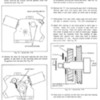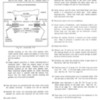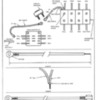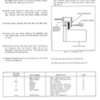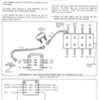I’ll spare you all the details but it turns out the headlight switch took a dump. When I removed it from the panel it almost fell apart. They seem to be notoriously fragile from the various threads I’ve read here. While I was troubleshooting, I discovered my headlight door relay was wired very strangely. A couple of the wires fell off before I could get it completely loose but I’m not even sure how it could have even worked (but it had). It had a 12 gauge blue wire that was switched to 12v from the ignition switch with what appears to be a 30A circuit breaker. The breaker was mechanically mounted with one of the headlight relay screws. Why would you need a 30 amp breaker on the headlight motor circuit? I removed it because there was already a 12v supply to the relay. Here’s a picture of the circuit breaker. Anyone recognize this?

I rewired it per the schematic below.

In the mean time I removed the switch and made a jumper for the wires and all is fine now at least temporarily. I think I’ll make the recommended mods to the headlight circuit such as others have done and described my Mike Drew here to add a couple relays and get the headlight current of the switch.
http://www.panteraplace.com/page116.htm
I see the vendors have replacements. So does anyone have a spare headlight switch for sale with chrome bezel and ‘LIGHTS” script like this one?




